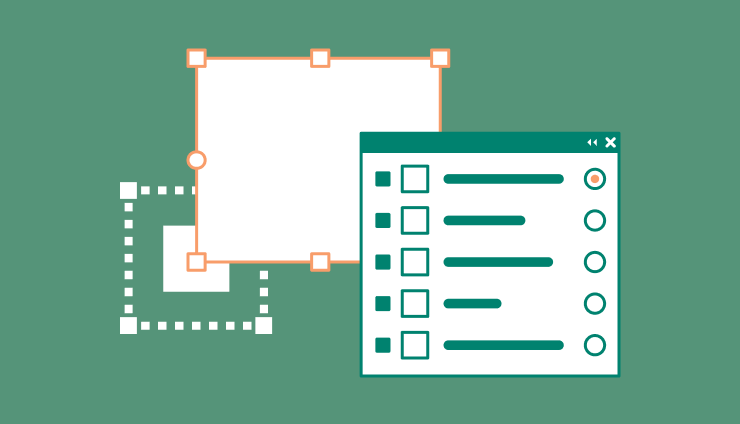Unlock the secrets to impactful instructional design with practical tips, real-world e-learning best practices examples, and proven strategies to create courses that truly resonate with learners. Learn how to:
- Set clear objectives and create learner-focused instructional content.
- Use active learning and concise strategies for maximum impact.
- Learn from case studies to apply proven techniques effectively.
Understanding e-learning instructional design best practices is essential for crafting impactful instructional experiences. In 1885, psychologist Hermann Ebbinghaus revealed that humans forget up to 90% of new information within hours, a challenge compounded by our studies showing that over 80% of employees resist e-learning due to time constraints. E-learning designers must prioritize clear objectives, engaging multimedia, and efficient, learner-focused strategies to combat these hurdles. This article explains proven methods to enhance retention, boost motivation, and design captivating, effective online courses.
Understanding the Role of Instructional Design in E-Learning
Instructional design is the systematic process of developing and organizing educational content to meet specific learning objectives—playing a pivotal role in the success of online learning. By adhering to e-learning standards and instructional design best practices, such as the ADDIE model, instructional designers create engaging, learner-centered, and results-oriented courses. The goals and functions of modern instructional design include:
- Defining clear learning objectives to guide course structure and learner focus.
For instance, corporate sales training might aim for learners to “demonstrate objection-handling techniques,” ensuring every module directly supports this goal. - Sequencing content logically to build on prior knowledge and enhance comprehension: A programming course, for example, could introduce basic syntax before moving to complex problem-solving, creating a clear learning progression.
- Incorporating diverse media (e.g., videos, infographics, quizzes) to cater to varied learning styles. Combining animated videos, flashcards, and audio clips in a language course engages visual, textual, and auditory learners.
- Assessing learner progress through thoughtful evaluation methods, such as quizzes and assignments. Progress can be tested through quizzes on Agile methodologies or assignments to create mock project plans, ensuring practical application.
- Ensuring alignment between content, delivery methods, and desired outcomes. In healthcare compliance training, for instance, HIPAA-focused modules and role-playing videos prepare learners to meet regulatory standards effectively.
“By adopting best practices for e-learning design, instructional designers transform learning experiences into impactful, measurable successes—improving retention rates by up to 60% and increasing course completion rates by 40%—bridging the gap between theoretical content and real-world application to ensure meaningful learner engagement.”
— Raccoon Gang’s E-learning Architect.
Design & Presentation
Effective eLearning depends on thoughtful design that increases learner engagement in the learning process. By implementing e-learning development best practices, instructional designers can craft user-friendly interfaces that balance aesthetics with functionality. For instance, intuitive navigation combined with interactive components like clickable infographics or scenario-based quizzes transforms static content into a dynamic, participatory experience. This approach not only fosters deeper learning but also aligns the course structure with cognitive principles, making it easier for learners to retain and apply new information.
1. Use meaningful images
Meaningful visuals act as anchors, making content more relatable and memorable. For example, diagrams that align with the subject matter help learners connect theory to practice. Visuals also simplify complex concepts, such as using flowcharts to explain workflows. Aim to include images that not only enhance comprehension but also guide learners’ focus—especially within shorter modules of 5 to 15 minutes, as recommended in e-learning instructional design best practices.
2. Design a distraction-free template
A clean, simple interface ensures learners stay focused on the material. Avoid clutter, such as excessive graphics or unnecessary animations, and highlight key information at the top of each module. Including 3–5 questions at the end of each segment allows learners to solidify their knowledge without feeling overwhelmed, following e-learning development best practices for assessment design.
3. Ensure that there is enough white space
White space isn’t wasted space—it creates breathing room that helps learners process information. This is particularly important when courses cover extensive content that might otherwise feel dense. By integrating white space thoughtfully, you reduce cognitive overload and make content more digestible in shorter learning paths.
4. Break up the content
Breaking large blocks of text into sections with subheadings and bullet points enhances readability. For instance, when explaining technical processes, group steps into 2-3 sentences with key details presented upfront. Short modules, paired with quizzes of no more than five targeted questions, keep learners engaged without causing fatigue.
5. Use colors intelligently
Colors not only appeal visually but also guide attention and evoke emotions. A palette consistent with your brand fosters recognition, while purposeful highlights (e.g., red for warnings and green for success markers) help learners prioritize important details. Use contrasting colors sparingly to ensure readability without overwhelming the viewer.
6. Maintain consistency
Consistency across your course materials—fonts, headings, and formatting—helps learners navigate easily. For example, if all module titles follow the same design, learners can quickly locate relevant sections. This uniformity creates a seamless experience, ensuring learners focus on content rather than adjusting to varied styles.
7. Don’t overcomplicate navigation
Navigation should be intuitive and predictable. Use simple menus and breadcrumbs to allow learners to track progress effortlessly. For instance, in a multi-module course, provide clear labels and links to the previous and next sections. Simple navigation avoids frustration and keeps learners focused on their objectives.
8. Use engaging graphics and effective audio
Multimedia elements should enhance—not distract from—the learning experience. For example, an animated video can demonstrate processes step-by-step, while a short voiceover can add depth to text explanations. However, balance is crucial: ensure audio is optional for learners in quiet environments and graphics align tightly with the learning objectives.
Content & Delivery
“Effective instructional design is not just about delivering information; it’s about creating an immersive learning experience that resonates with the learner’s mind, engages their curiosity, and guides them toward meaningful objectives. Design with purpose, communicate with clarity, and always keep the learner at the heart of the process.”
— Michael Allen, Renowned Instructional Designer
1. Identify your objectives and goals
Clear objectives are the foundation of impactful e-learning. Without them, it’s challenging to ensure alignment between content and learner needs. Begin by defining what learners should achieve, such as mastering a skill or applying concepts to real-world scenarios. For example, if the goal is to teach time management, outline measurable outcomes like “develop a weekly plan” or “reduce task completion time by 20%.” Keep in mind that today’s employees dedicate just 1% of their workweek—about 20 minutes—to learning, so concise and targeted objectives are crucial.
2. Go beyond a basic introduction
A strong start sets the tone for the entire course. Instead of relying on generic welcomes, craft an engaging introduction using these techniques:
- Tell a compelling story: Share a scenario like a workplace challenge resolved through the course content. Stories resonate and grab attention.
- Pose thought-provoking questions: Kick off with a quiz or question such as, “How much time do you spend on tasks that could be automated?” This approach prompts reflection.
- Introduce interactive elements: Use brief polls or drag-and-drop activities to immediately engage learners. This aligns with e-learning best practices for interactive design.
3. Emphasize communication and your availability
A well-communicated support structure encourages learner confidence.
- Establish clear communication channels: Offer options like discussion boards, live Q&A sessions, or designated office hours to answer questions.
- Encourage peer-to-peer interaction: Enable group discussions to build community and improve engagement. Collaborative learning has been shown to boost retention by up to 50%.
- Set expectations for response times: Be transparent about your availability. For example, “All inquiries will be answered within 24 hours.”
4. Create an engaging course
Engagement is key to success, especially when 90% of employees report dissatisfaction with outdated, irrelevant LMS designs. Use these strategies to captivate learners:
- Cater to different learning styles: Blend multimedia formats like videos, infographics, and hands-on activities.
- Gamify the experience: Incorporate quizzes, progress badges, or leaderboards to motivate learners. For instance, award badges for completing short 5–15 minute modules.
- Use storytelling techniques: Frame lessons within real-world scenarios, making the material relatable and memorable.
5. Embrace active learning
Passive consumption doesn’t lead to meaningful knowledge retention. Modern e-learning instructional design est practices prioritize active participation through:
- Discussions and open-ended questions: Encourage critical thinking by posing real-world problems related to the course content.
- Practical exercises: After every 15–20 minutes of content, include short tasks or simulations that test knowledge application.
- Group projects: Foster collaboration by assigning team-based challenges that reflect workplace scenarios.
6. Keep it concise
Modern learners often multitask or access courses in short bursts. Structure your content to reflect this reality:
- Chunk content into small segments: Break lengthy modules into manageable 5–15 minute lessons.
- Highlight key information first: Use a top-down structure where critical details appear first, followed by supporting information.
- Write in short, simple sentences (30 words max): Clarity enhances focus and prevents cognitive overload.
7. Be specific with numbers
Precision adds credibility and clarity to your course.
- Measure progress frequently: Instead of a single 40-question test, split assessments into 3–5 questions after each module to test knowledge from multiple angles.
- Set numeric goals: For example, aim for a “95% completion rate on the first module” or “learners answering 80% of post-module quizzes correctly.”
Showcase achievements: Use metrics like “20 modules completed” or “15 new skills acquired” to highlight progress and boost motivation.
“By adopting these strategies and aligning with e-learning best practices, instructional designers can create courses that not only engage learners but also deliver measurable results. With 92% of L&D budgets increasing or staying the same in 2024, there’s never been a better time to optimize your digital learning strategy.”
— Raccoon Gang’s Instructional Content Strategist.
Perspective & Enhancement
1. Ensure that your learners stay focused
To foster concentration, design courses that integrate real-world scenarios and interactive elements. For instance, in a course on graphic design fundamentals, replace lengthy theoretical explanations with scenario-based learning: create design challenges that require learners to solve practical problems, such as branding for a fictitious company. Incorporate multimodal resources like video tutorials and infographics to cater to visual learners while encouraging active engagement. This approach reflects best practices for e-learning design, which emphasize active application over passive absorption.
2. Pretend you’re the learner
Empathy is a cornerstone of effective instructional design. Walk through your course as a learner—what feels intuitive, and where do challenges arise? For example, a convoluted navigation system or overly dense content blocks might frustrate users. Optimize the interface with learner-centric usability testing, focusing on clear pathways and concise, actionable lessons. Refining your approach from this perspective ensures alignment with e-learning usability heuristics, which are key to creating seamless learning experiences.
3. Explore new tools and resources
The e-learning landscape evolves rapidly, with educational technology taking the market by storm. Regularly explore tools such as adaptive learning platforms, which customize content based on individual progress, or agile solutions like OpenEdx services. OpenEdx serves as a comprehensive LMS, supporting content authoring tools with various integrations to enhance course creation and delivery, offering flexibility and scalability for diverse learning needs. Engage in microlearning design workshops to discover methods that align with best practices for e-learning design, especially for time-constrained learners. Collaborating with peers at conferences or in professional forums ensures exposure to emerging trends and cutting-edge pedagogy.
4. Reward good work
Recognition systems foster motivation and engagement. Implement gamified reward mechanisms, such as achievement badges, certificates, or leaderboard rankings, to acknowledge learners’ progress. For instance, awarding certificates after completing micro-courses (5–10 minutes long) can celebrate incremental achievements. Include behavioral reinforcement elements by combining public recognition (like shout-outs during live sessions) with private, personalized feedback. These strategies enhance the learner experience ecosystem, promoting morale and sustained engagement.
Instructional Design Best Practices for Perspective & Enhancement
| Focus Area | Key Strategy | Professional Terms |
| Learner Focus | Integrate scenario-based learning and multimodal resources for engagement. | Scenario-based learning, multimodal resources |
| Learner Empathy | Conduct usability testing and refine navigation for intuitive experiences. | Learner-centric usability testing, e-learning heuristics |
| Exploring Tools | Leverage adaptive platforms and microlearning tools for tailored content delivery. | Adaptive learning platforms, content authoring tools |
| Rewarding Achievement | Use gamified rewards and behavioral reinforcement for sustained motivation. | Gamified reward mechanisms, learner experience ecosystem |
How to Improve Your Instructional Design Skills
Improving instructional design skills involves understanding learner needs, leveraging modern technologies, and applying effective e-learning techniques. It’s not just about delivering content but crafting engaging, learner-centered experiences that achieve measurable results.
“Exploring formal education options in instructional design can significantly elevate your expertise. Pursuing a Master’s in Instructional Design & Technology provides a comprehensive understanding of pedagogical principles and cutting-edge technologies.”
— Raccoon Gang’s Instructional Strategist
1. Stay Updated on Emerging Trends and Techniques
Keep up with advancements like adaptive learning platforms and data analytics. Attend industry events and training sessions to stay current. Use effective e-learning techniques like personalized learning paths, as demonstrated in NASA’s Open Science 101 curriculum, which uses modular structures and interactive tools to engage learners.
2. Emphasize Learner-Centric Design
Put yourself in the learner’s place to ensure content is intuitive and engaging. OpenEdx’s integration into the EBRD Policy Academy platform showcases how accessible, multi-format content meets diverse learner needs effectively.
3. Experiment with New Tools and Formats
Explore tools like OpenEdx for SCORM integration and content creation. Interactive elements, such as quizzes or drag-and-drop activities, can enhance engagement while experimenting fosters creative solutions.
4. Collaborate with Other Professionals
Collaboration sparks innovation. In NASA’s Open Science 101 project, teamwork with subject matter experts and designers produced high-quality modules using features like matching exercises and accordions.
5. Incorporate Feedback at Every Stage
Collect feedback from learners and peers to refine courses. The EBRD project used data and the Kirkpatrick evaluation model to enhance content and ensure its relevance and impact.
6. Build Recognition into Learning Paths
Motivate learners with badges, leaderboards, or certificates. NASA’s Open Science 101 curriculum successfully used a badge system to celebrate progress and foster engagement.
7. Commit to Lifelong Learning
Expand your expertise with certifications or advanced degrees in instructional design. Continuous professional development helps adapt to evolving industry trends and learner needs.
Wrapping Up
To create impactful e-learning, focus on key principles: learner-centric design, experimenting with tools, integrating feedback, and recognizing achievements. These eLearning instructional design best practices ensure courses that engage learners and deliver meaningful results.
At Raccoon Gang, we bring these principles to life with tailored eLearning solutions. Whether designing scalable e-learning modules for the EBRD Policy Academy or developing interactive curricula like NASA’s Open Science 101, our expertise ensures effective and engaging online learning experiences.
If you’re looking to elevate your instructional design projects, we’re here to help. Let us create courses that captivate, educate, and deliver measurable results for your organization. Book a call with us today to explore our services!




